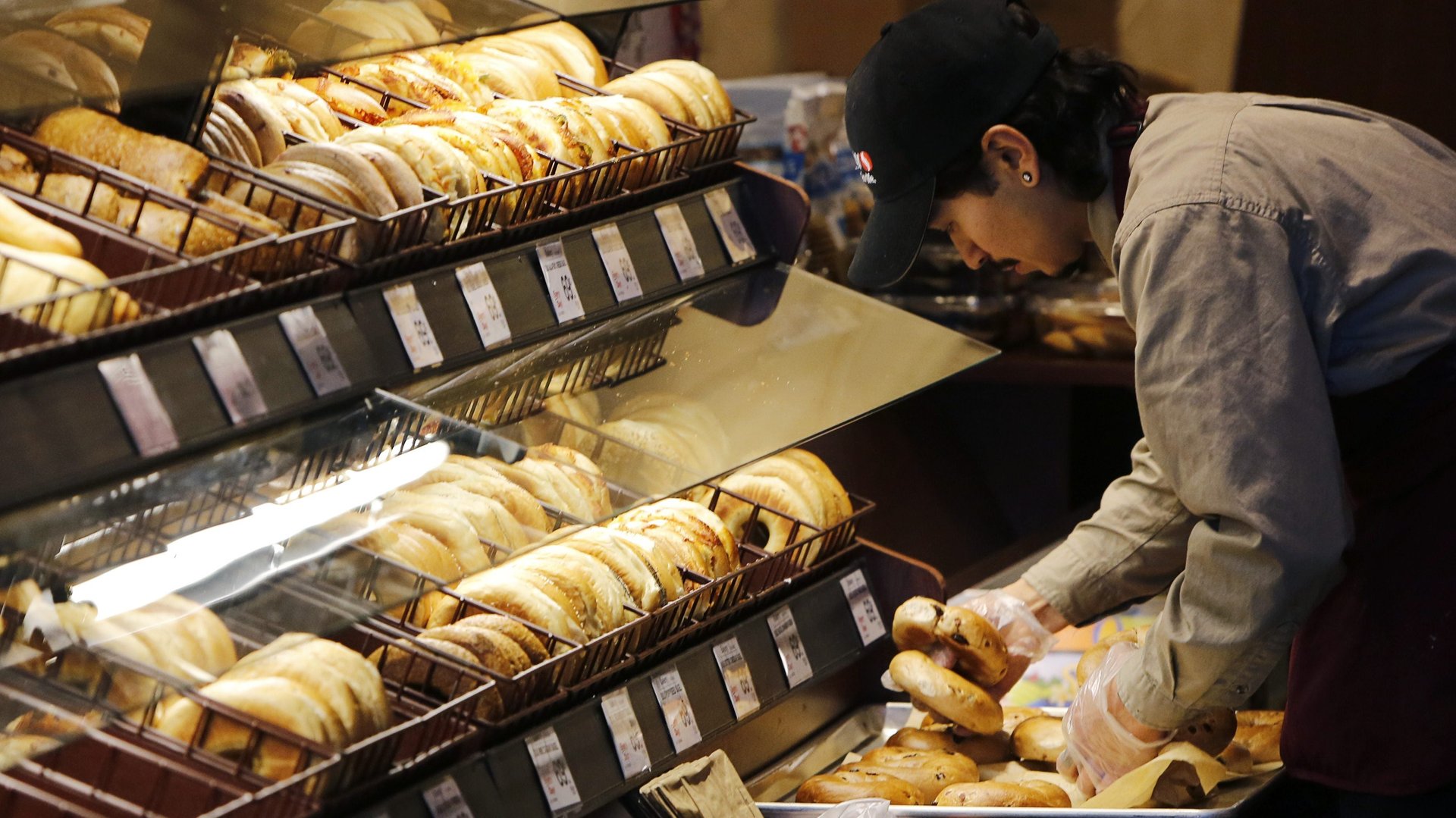All the reasons why there is a cream cheese shortage
Cream cheese has become the latest casualty of pandemic-related supply snags, with food manufacturers to bagel shops reporting shortages of the ingredient.


Cream cheese has become the latest casualty of pandemic-related supply snags, with food manufacturers to bagel shops reporting shortages of the ingredient.
From bagels to cheesecakes, the uses for cream cheese spread wide, and since it’s a perishable product, buyers can’t stock up.
Why is there a cream cheese shortage?
Part of the reason for the shortage traces back to a cyber attack on the plants and distribution centers of Schreiber Foods, one of the biggest cheese manufacturers in Wisconsin, which closed for some time in October.
And, like with many items in short supply, supply chain issues from transportation snags to labor shortages have played a factor. A recent report from the US Department of Agriculture from the week of Dec. 6 said midwestern cream cheese producers are busier, with freight and hauling costs being the “wildcard” for both suppliers and consumers. Meanwhile, in the eastern part of the US, regional cream cheese food service shortages may be due to multiple factors, including logistical bottlenecks, labor issues, and supply shortages at manufacturing facilities.
That comes as demand for cream cheese has surged, whether due to people baking at home or feeling comfortable about heading out and picking up a bagel before commuting to the office. The latter has led some bagel shop owners in New York City scrambling across state lines to find the schmear. Kraft, which produces Philadelphia Cream Cheese, has increased production and raised prices 12 cents, to $4.07, over the last year for a standard container of soft cream cheese, according to data from Nov. 28 from IRI, a market research firm. Demand is heightened during the holiday season when bakeries are busy selling specialty desserts.
🎧 For more intel on food manufacturing, listen to the Quartz Obsession podcast episode on oat milk. Or subscribe via: Apple Podcasts | Spotify | Google | Stitcher.
Kraft is turning the shortage into a marketing opportunity, with the food manufacturer paying shoppers $20 if they can’t find cream cheese at the store. On Dec. 17 and Dec. 18, the first 18,000 people who sign up will be reimbursed. Later on, users will be able to submit their receipt to receive the $20.
The cream cheese shortage had hit the restaurants
The cream cheese shortage hit Junior’s, a restaurant chain in New York City known for their cheesecakes, for the first time since opening in 1950, according to Alan Rosen, the third-generation owner of Junior’s.
Rosen says the business didn’t get its first delivery two Thursdays ago. So he says he shut down production in Burlington, New Jersey, where it makes the cakes, on half of a Thursday and a Friday. On Saturday, he drove to the cream cheese warehouses in Pennsylvania to pick up the cream cheese, as he wanted to make sure the business could produce for Sunday, an important day, especially, during the holidays, he says. There was another shut down last Thursday. “There’s no way to make cheesecake without cream cheese,” says Rosen. Cream cheese makes up 85% of Junior’s cheesecake.
Junior’s typically receives 120,000 pounds of cream cheese each week, but the business had missed out on a couple out a couple of loads last week, he says. The price of cream cheese has also gone up 8%, leading the company, which also makes cheesecakes for retailers, to bump up prices, according to Rosen. Along with it, he says the business is facing shortages in plastic, which is used to make the dome to protect the cakes.
Rosen says people tell him to use ricotta cheese instead. His response: “We don’t make Italian cheesecake. There’s no substitute for cream cheese and cheesecake.”
It’s not clear when the shortage will end. Rosen says the business is being told that deliveries are coming as scheduled, but he says the issue could pop up again. “There’s a reason our cheese can taste the way it tastes,” he says. “We’ve been using that cream cheese since 1950. Our recipe hasn’t change an ounce.”